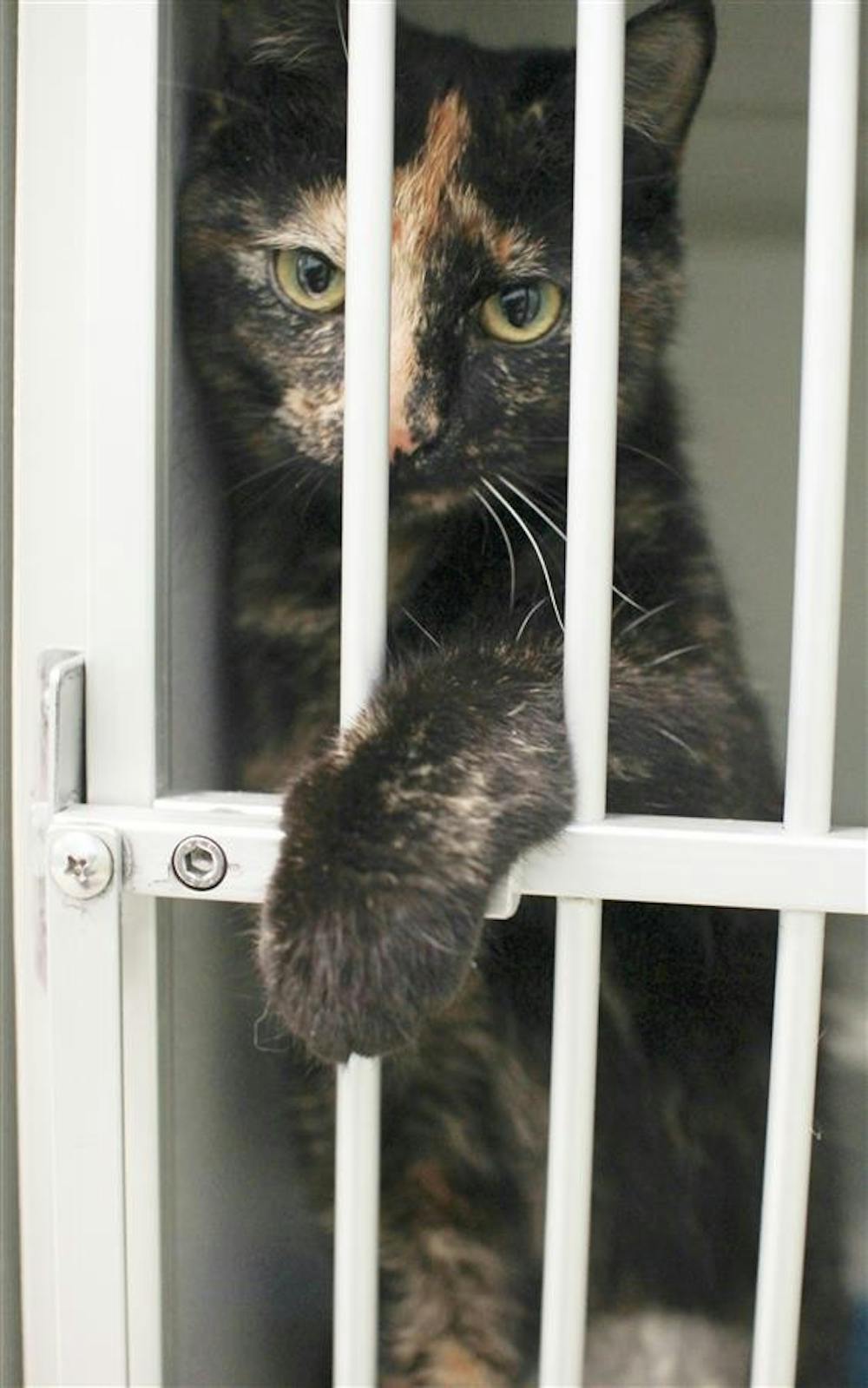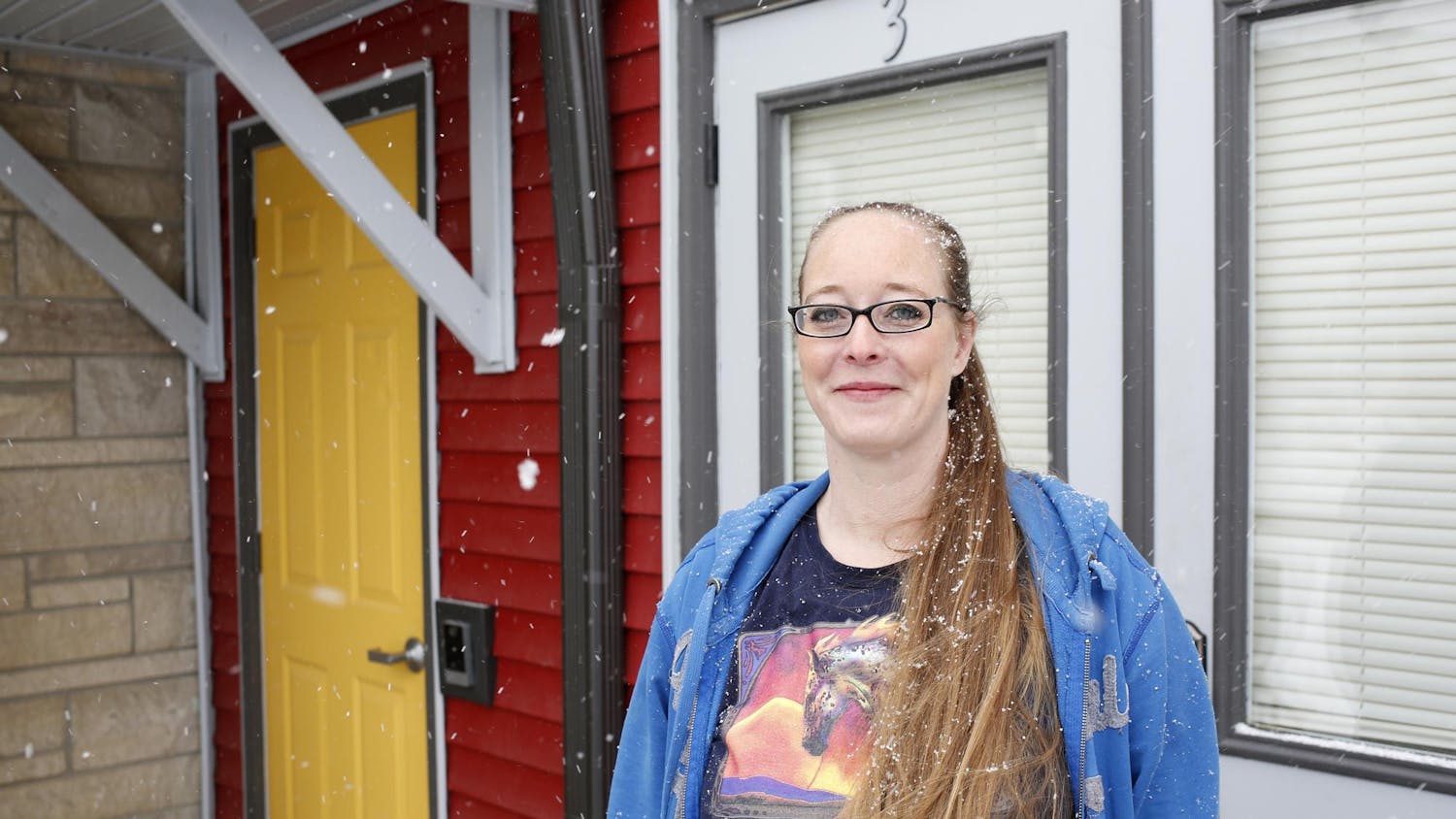In the last year, the City of Bloomington Animal Care and Control shelter has seen decreased numbers of animals coming into the shelter and greater numbers of adoptions.
Laurie Ringquist, Director of Animal Care and Control in Bloomington, said in a press release this is the first time the shelter’s annual intake has been less than 4,000 animals, according to data dating as far back as 1978.
Shelter Manager Virgil Sauder said last year, the shelter held a three-month long ASPCA challenge in order to push animal adoptions. The program was successful, and there were 2,393 total adoptions in 2012, representing a 22 percent increase from 2011.
“It was a lot of work and a lot of effort getting those out of the door,” Sauder said in regards to the ASPCA challenge. “Last year we didn’t do that, but we saw our numbers of adoptions being the same, pretty much.”
There were 2,216 total adoptions in 2013, 117 less than 2012. There were also 106 fewer animals taken in by the shelter in 2013 than in 2012.
“In our normal operating procedures, we were able to re-create those three months of complete, intense, push,” Sauder said.
In 2013, 1,992 cats were taken into the shelter and slightly more than the 1,732 dogs.
About 1,080 cats and 966 dogs were adopted, less than the 2012 adoption rate but considerably greater than 778 cats and 1,063 dogs adopted in 2011.
Sauder has been working at the shelter since the fall of 2005, making this his ninth year as manager. Improvements in adoption, euthanasia and intake rates have happened throughout the years, Sauder said.
“It’s been a change that’s happened over time,” he said.
This is due to a variety of efforts throughout the years, Sauder said, including providing easy and affordable spaying and neutering services.
When the number of litters decreases, the intake numbers for the shelter also decreases.
The same is true for a city-supported effort to spay and neuter the feral cat population.
Sauder said when he started, there were litters of eight to 10 puppies coming in multiple times a day.
“When you go from starting the day with three kennels, to having easily 15 dogs walking in the door, there’s just only so much you can do because you get yourself backed up,” Sauder said.
He noted this problem has persisted somewhat with kittens, but that intake overall has decreased.
Sauder said the decreased numbers of animals in the shelter also improves the experience of people walking in the door.
“Having less animals packed in makes for the adoptions to happen quicker because it’s not as overwhelming,” Sauder said.
Funded by the city, the animal shelter also handles animal control. The shelter has contracted with the county, meaning county animal control brings in the strays from everywhere in Monroe County.
“Everyone who’s a resident in Monroe County through their tax dollars are already paying for our services,” Sauder said.
The shelter depends on the support of volunteers. Their services include sheltering stray animals, reuniting lost pets and their families, facilitating adoptions, enforcing county ordinances, and investigating cruelty and neglect cases, according to the shelter’s website.
Sauder reiterated the past year has represented less work from volunteers but an overall improvement in numbers for the shelter.
“We can do the same amount of saving lives and getting them out the door with less stress,” Sauder said.
Follow reporter Mary Katherine Wildeman on Twitter @marykwild.
Animal shelter adoptions increase, intake decreases

Get stories like this in your inbox
Subscribe





